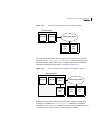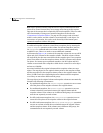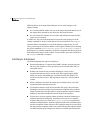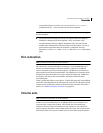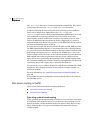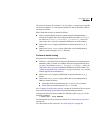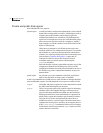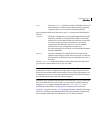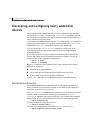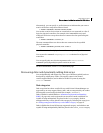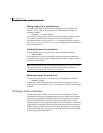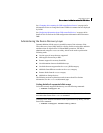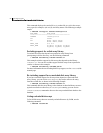
79Administering disks
Disk devices
The syntax of a legacy device name is c#t#d#, where c# represents a controller
on a host bus adapter, t# is the target controller ID, and d# identifies a disk on
the target controller.
Fabric mode disk devices are named as follows:
■ Disks in supported disk arrays are named using the enclosure name_#
format. For example, disks in the supported disk array name FirstFloor
are named FirstFloor_0, FirstFloor_1, FirstFloor_2 and so on.
(You can use the vxdmpadm command to administer enclosure names.)
■ Disks in the DISKS category (JBOD disks) are named using the Disk_#
format.
■ Disks in the OTHER_DISKS category (disks that are not multipathed by
DMP) are named using the fabric_# format.
Enclosure-based naming
Enclosure-based naming operates as follows:
■ All fabric or non-fabric disks in supported disk arrays are named using the
enclosure_name_# format. For example, disks in the supported disk array,
enggdept are named enggdept_0, enggdept_1, enggdept_2 and so on.
(You can use the vxdmpadm command to administer enclosure names. See
“Administering DMP using vxdmpadm” on page 139 and the
vxdmpadm(1M)
manual page for more information.)
■ Disks in the DISKS category (JBOD disks) are named using the Disk_#
format.
■ Disks in the OTHER_DISKS category (disks that are not multipathed by
DMP) are named as follows:
■ Non-fabric disks are named using the c#t#d# or disk## format.
■ Fabric disks are named using the fabric_# format.
See “Changing the disk-naming scheme” on page 91 for details of how to switch
between the operating system and enclosure based naming schemes.
To display the native OS device names of a VM disk (such as mydg01), use the
following command:
# vxdisk path | egrep diskname
For information on how to rename an enclosure, see “Renaming an enclosure”
on page 155.
For a description of disk categories, see “Disk categories” on page 83.



